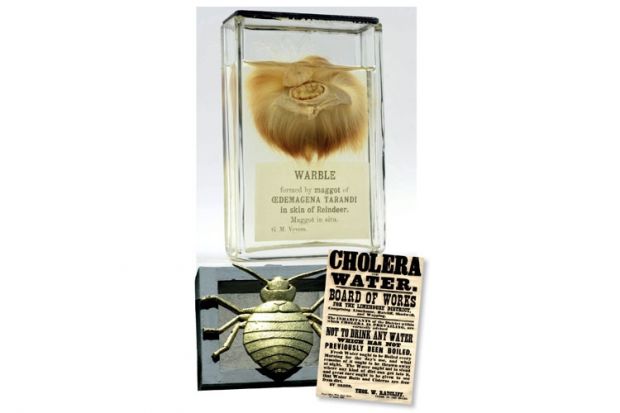The gilded bedbug is one of the eight vectors of disease – along with a louse, a rat, a mosquito, a flea, a snake, a tick and a fly – that adorn the balconies around the school’s Grade II listed Art Deco building in Bloomsbury. The maggot of a warble fly (Oedemagena tarandi), which burrowed under the skin of a reindeer, is in the spirit jar collection and has never before been shown to the public.
The printed notice refers to the cholera outbreak that hit areas of East London in 1866 that had not yet been connected to the new sewerage system.
Yet this tragic event also marked a turning point in our understanding of disease, as evidence steadily accumulated that transmission was occurring through people being forced to drink contaminated water, as had already been suggested by John Snow.
An exhibition celebrating the bicentenary of his birth, Cartographies of Life and Death: John Snow and Disease Mapping, was held at the LSHTM earlier this year.
Register to continue
Why register?
- Registration is free and only takes a moment
- Once registered, you can read 3 articles a month
- Sign up for our newsletter
Subscribe
Or subscribe for unlimited access to:
- Unlimited access to news, views, insights & reviews
- Digital editions
- Digital access to THE’s university and college rankings analysis
Already registered or a current subscriber? Login

